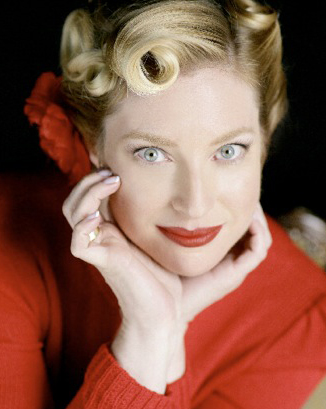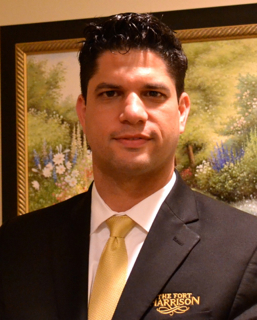The Modern Butlers’ Journal
July 2017
In its 13th year of publication
International Institute of Modern Butlers
Teaching Right Mindset, People Skills, & Superior-service Expertise
Message from the Chairman

There is nothing quite like Paris in the spring and summer, those warm days and long evenings, the magnificent buildings, the focus on fashion, the flowers, the arts, the food, the wine…. What is there not to love about Paris—and the Parisians, who are courteous at first, friendly soon enough? All I can say is that the world would be a poorer place without the French culture to give it color and reason.
We are happy to announce that the Modern Butlers’ web site has had a make-over—part of which is a new look for the Modern Butlers’ Journal.
Butlers in the Media
A pleasant article about a long-term butler in Hong Kong.
And an article entitled “Which virtual butler will command the servants in your smart home?” Really? We seem to be moving closer to the surreal prospect of The Battle for Supremacy of the SuperButlers. One caption reads: “Smart home needs a smart butler.” How about a live and intelligent butler who is trained to use computerized systems as servo mechanisms? Where does the idea come from that people are not necessary? A robot-like human who has lost any sign of life? Or a robot that has been programmed to make humans obsolete? Both options seem to lead to the same source: a human that has lost his or her humanity.
So the latest robot butler can walk up stairs, open doors, and iron wrinkles. The article does not say whether it can do any of these actions with any degree of finesse.
The Attraction of Online Courses
An independent survey was conducted recently which found that
- People like to learn at home more than anywhere else;
- If they have a choice between learning on computers, tablets, mobile phones or reading a printed document; they pick a computer. Mobile phones came last;
- The preferred duration for learning is 16-30 minutes, by a huge margin;
- Only about 50% of people feel they have the learning opportunities they need in their work;
- Learning opportunities are critical to job satisfaction.
Furthermore, what people desire the most is self-paced learning and to put information into practice immediately. Anyone who has done any of the Institute’s online courses knows that’s exactly the way their Institute training is conducted. The courses were designed and written by the Chairman, who has worked for decades as an educator, specializing in cutting-edge education methods, as well as by Professor Ratliff, likewise an educator for decades. See what courses are available.
The Wisdom of Butlers Past, Part 2
The prospect of working in private service has not changed so much over the last two centuries. On the plus side, one enjoys proximity to the fine trappings and environments that our employers demand around them, and on the down side, have to deal with the challenges, “trials of temper” from those we serve or others who serve them, and “self-denials” as we put aside our interests for the greater good—for “neither your time nor your abilities are any longer your own, but your employers’.”
And that is why the author begins his book by discussing these realities to anyone who might be interested in joining the profession. In a way, don’t be beguiled or tempted by the pluses without also considering the minuses. Yes, you may well jet set around the world and drive the finest of cars and live and/or work in the finest of palaces, but that annoying little invisible line exists all the time, dividing you as service provider from the family and friends to whom you are providing service.
“Candidates for gentlemen’s service must consider that it is a way of life wholly different from any that they have been accustomed to, comprising comforts, privileges, and pleasures which are to be met with in but few other situations; and, on the other hand, difficulties, trials of temper, and self-denials, beyond what you might be called on to bear in some other state of life.
“When you go into service, all the ways in which you may have been indulged at home must be given up. And you will find it equally to your comfort and profit to have none but those of your employers, as far as they may be consistent with justice and moral government. Reflect that when you once engage yourself in a situation, neither your time nor your abilities are any longer your own, but your employers’, and they have consequently a claim on them whenever they may be required.”
Extracted from the 1823 book, The Footman’s Directory and Butler’s Remembrancer, re-published in hardback by Pryor Publications.
You may obtain your discounted copy (with free s&h) by emailing the publisher: Mr. Pryor (alan AT pryor-publications.co.uk) and telling him you read about the offer in the Modern Butlers’ Journal.
Book Review of
Serving the Wealthy
Sections on The Role of the Butler
and the Principal’s Wines, Part 3 of 12
by Gretchen dePillis
A Wealth of Knowledge

The text of Serving the Wealthy provides collective expertise on the hard and soft skills required in the elegant management of private estates. Just looking idly through it, if you glance at the section titled “Clearly defined roles”, (Volume 1, page 118), you will see that one element of the butler’s job description includes ensuring “the employer and other members of the household enjoy the ultimate in personal service and comfort.” Toward this end, the first-hand accounts in the book of being a butler in a high-net-worth household today are invaluable. I would recommend reading Mr. Fink’s statement (Volume 2, page 232) that a butler is normally also trained as a valet. In more modest households, one individual could serve both functional roles, whereas in larger and traditional estates, the butler oversaw the management of the staff, including a valet, which is a separate position. See more information on valets in Volume 1, starting on page 199 and Volume 2, on page 211.
A gentleman’s valet is not to be confused by Americans with a parking valet. If you are seeking to engage a parking valet, then Volume 2, Appendix 16i on page 328 is the reference checklist you seek.
Just one page earlier, page 231, we have a first-hand account of how the International Institute of Modern Butlers is an excellent forum for experts to share the knowledge needed to maintain the subtle and intricate skills inherent in modern and refined private service.
Page 236 shows how life as a butler differed a century ago.
It is important to understand the “back story” from which this esteemed profession originated. It is also valuable to learn first-hand experiences of those in different eras and countries to understand what is unique and yet bindingly similar in the profession
Ms. dePillis is a freelance contributor to the Journal who is based on the West Coast of the United States. She can be reached via depillis@gmail.com
Creative Corner
On Art and Service
by Kobi Gutman


Being the first sculpture I had made of this kind, I had all the reasons I needed not to make it. I didn’t have proper knowledge; I had no previous training; I didn’t have any tools; the armature (a metal framework on which a sculpture is molded) that supports it was made incorrectly, etc. Really, the only reason this horse is still standing is because I intended to do it and I went ahead and did it.
When servicing guests, we now and then encounter special needs and requests that we had not encountered before. We may have not been trained for such a situation; we might not have sufficient tools, resources, or knowledge to handle such a request. Or the person we normally use to provide that service is not there that day. Or, or, or….
There are many reasons not to do something. One key test of a service professional is if he or she makes something happen despite all the reasons it cannot be done. It might not be perfect. It might take longer than it should. But it will be done.
In the case of this horse, to access the areas of the horse for which my fingers were too big, I sliced a piece of eraser and used that as my tool. The eyes, nostrils and mouth were created using a toothpick.
When you do not allow external (or internal) reasons to stop you, and you find ways to service your guests despite whatever it may be, not only do you become more capable, but your confidence in your own ability also rises. At that point, of course, it becomes easier to manage things and events, and you could say that life becomes that much brighter for one and all.
That is what this little statue told me and I thought I’d share it before continuing with the relay of the techniques.
Mr. Gutman is the head butler at a private hotel in Florida and can be reached via the Institute.
One More Notice to Those Who Have Bought the E-book version of
Hotel Butlers, The Great Service Differentiators
It has been brought to our attention that our publisher automatically converted the Hotel Butler book to Kindle and that some of the charts at the back were not showing properly. We have corrected this issue ourselves, and in the meantime, would like to offer anyone who bought the Kindle version, a complimentary pdf of the book. Please contact us to let us know if you are one of these people.
The Butlers Speak
The Placement Game, Part 4 of 6
General Pointers

Continuing the survey of butlers and HMs/EMs, we asked for general pointers when looking for a position.
“Find out if possible how long the last employee was there and why he or she left; and how many individuals have been in that position. If there be a high turnover, keep in mind that your position may be short term, and through no fault of your own.” DS
“Perseverance is the key; network; keep your skill set current. Then network some more.” M
Along the same lines, another butler suggests, “All channels require a relentless determination. Ultimately, you’re selling your personality first and foremost, followed by your experience. I have long averred [stated] that I can train an eager neophyte [someone new to a position], but I cannot change his/her personality. Assessing the innate presence of a service mentality is the first criteria (for me) when interviewing a new hire.
“LinkedIn is a good place to post a general, professional profile (when looking for a position) that omits employers’ names, but includes years worked and a list of applicable skills, plus a photograph. As agencies do reach out through this avenue, it is best to take down the profile if you are happily engaged.
“People interested in the field should take the opportunity to learn the trade. Though some homes do bring in an expert to work with the staff for optimum performance. Today, on-line correspondence courses, and short-term, in-person training are available. It is a fantastic way to become educated, invest in yourself, and attain some experience. I wish these programs were available thirty-five years ago, when I started my career.
“Don’t burn bridges! With my years of experience and references, I have worked for the same employer more than once: I worked for a family for ten years, and decades later, they hired me to care for their father, a professor who had Alzheimer’s disease. I did that for three years and then was hired for another position for two years because that family saw how wonderful I was with the professor.”
“If you can, network with others in similar positions. Maintain relationships with previous principals, house managers. My principal has asked me many times if I know of anyone who could fill a position for one of his friends or colleagues.” NS
“Ask as many questions as you can think of—you are interviewing them just as much as they are you. I’d recommend working a trial day to generate a feeling of how things are run. Some will be happy to pay you for that day, but I wouldn’t push that. It should suffice that they are flying you in and putting you up in a hotel.” PB
“I have several suggestions:
- Be relentless;
- Frequently review your resume for major omissions;
- Ask agents representing you to review your resume for completeness;
- Create a LinkedIn profile and put more information in than you would include in an application-specific resume;
- Network: Start online conversations with colleagues you connect with on LinkedIn;
- Take summer or seasonal temp jobs to build your experience;
- Skip academies and other training organizations unless transitioning from another career. Training for an experienced applicant is not cost-effective.
“In my estimation, private service is 90% relationship and 10% skill. You can train and learn skills. But if you have to ‘wrap’ your innate nature around a contrary employer, it isn’t sustainable or very effective. Placement should be all about matching personalities. Far too much emphasis is placed upon the resume because understanding other people is not only a challenge, but sometimes not very pleasant. A “good” agent will spend enough time with the client to evaluate their nature. A one-hour meeting doesn’t provide an adequate window in which to experience the vagaries of any human. Part psychologist, the good agent can assemble enough perspective on the nature of the client to stand a reasonable chance of matching a candidate with a client. But it takes maturity, experience, and knowing what to look for. It’s match-making… not resume paring. The tendency of many candidates is to think all they have to do is provide a good resume and the agent will find them work. This is way to simplistic! Even a candidate that has completed a training program with accolades, does not assure a match between personalities. In days of yore, the way it worked was for the candidate to sense what was required of them to work around the employer, and then change his or her nature to fit in a subservient, deferential way. Today in America, we tend not to see ourselves as greater or lesser than anyone else. So this early format for private service no longer works well in the long run. Sure, we can force a relationship, but it won’t last. SA
Part 5 The Future of the Job Market
Part 6 Effective Ways of Attracting Future Employers
Let’s Talk about Mixology, Part 23
Rimming the Glass, Part 3 of 3
by Amer Vargas

Following our previous steps on how to rim a cocktail glass, let’s look at the second option for the last stage of rimming—that is, coating the rim with a powdery agent.
We focused on savoury agents in last month’s MBJ, and in this issue the focus is on sweet agents, with sugar as the classic cocktail medium, although modern times allow for some creativity to make drinks look even more appealing.
Sugar works very well with sweet-tart mixes high in acidity. The most common option for these cocktails is granulated or white sugar, which provides a very sweet and clean taste. For other mixes, like those with whiskey or bourbon as main ingredient, demerara, brown, or raw sugar are better matches and provide a deeper, caramelized flavor. Ensure you break down any sugar clumps in the raw sugar formed by the presence of sticky molasses.
Sugar can also be mixed with other powdery agents, like cocoa (which can be used on its own, too) which works very well for chocolate martinis; cinnamon-sugar gives a special twist to Kahlua, Bailey’s, and orange and chocolate liqueurs.

Candies are a funny and very eye catching option when presenting sweet cocktails. There is such a wide array of options that it would be impossible to name them all, but the basic idea is that any candy that you can reduce to a powder or reduce to very small chunks in a mixer, will work. Some examples: regular licorice or black licorice work well with black vodka mixes or concoctions containing berry syrups. You can also buy edible glitter, colored sugar-flakes, or confetti, rainbow or chocolate sprinkles… any ingredient that one might use for decorating a cake could work well for rimming a cocktail glass.
A special mention goes to that kid’s favorite, Pop Rocks! Pay attention though, to Pop Rocks coming into contact with any moisture—it will start to sizzle and pop, which may make it unstick from the rim.
Mr. Vargas is the Institute’s President and can be contacted via AmerVargas@modernbutlers.com
Consulting the Silver Expert
Cleaning and Polishing Silver, Part 2
by Jeffrey Herman

Gently wash and dry your silver immediately after use. While washing, do not allow silver to come into contact with a metal sink, as that can cause scratching. (Use a plastic dishpan or line the sink with a towel.) Use a non-lemon-scented phosphate-free detergent and, to avoid water spots, towel dry using a soft, cotton dish-towel or Selvyt cloth. Silver that is used frequently and washed in this manner will require infrequent tarnish removal.
 The right side of this sugar bowl was cleaned with Windex Surface Multi-Surface (I now prefer Better Life Natural Glass Cleaner as it’s made from plant-derived cleaning surfactants and just as effective) to demonstrate its tarnish-removal attribute
The right side of this sugar bowl was cleaned with Windex Surface Multi-Surface (I now prefer Better Life Natural Glass Cleaner as it’s made from plant-derived cleaning surfactants and just as effective) to demonstrate its tarnish-removal attribute
When storing your flatware, rotate the pieces so they will wear uniformly.
Tarnish is easily removed when first noticed (usually as a yellowish tint), and will become increasingly difficult to deal with as it turns to light brown and eventually black.
Occasionally, washing an object with a non-lemon-scented phosphate-free detergent is preferred to waiting until tarnish forms and becomes so stubborn that polishes have to be employed—all polishes having some degree of abrasion.
Most of us are familiar with that light brown – and eventually black – color that forms on silver. But you can catch tarnish in its very early stages if you hold the object against a piece of white paper (glossy paper if you have it). If tarnish has started to form, you will see a very light, yellowish tint in the silver.
Try removing this light tarnish with either diluted Dawn Dishwashing Liquid (citrus-free), Windex Multi-Surface Vinegar, Method Glass & Surface, or Purell Original Formula hand sanitizer. If the hand sanaitizer leaves a residue, rinse it off with warm water or remove it with a moistened cotton towel, then dry immediately. Try this technique first, as it is the least abrasive of all silver cleaning methods.

 The left image of this sterling spoon handle is in its original condition, the center image of the spoon was cleaned with hand sanitizer, and the right image was polished with Earth Friendly Silver Polish.
The left image of this sterling spoon handle is in its original condition, the center image of the spoon was cleaned with hand sanitizer, and the right image was polished with Earth Friendly Silver Polish.
Mr. Herman continues to offer his services to our readers for any questions you may have about the care of silver. Either call him at (800) 339-0417 (USA) or email jeff @ hermansilver.com
The Institute is dedicated to raising service standards by broadly disseminating the mindset and superior service expertise of that time-honored, quintessential service provider, the British Butler, updated with modern people skills, and adapted to the needs of modern employers and guests in staffed homes, luxury hotels, resorts, spas, retirement communities, jets, yachts & cruise ships around the world.”


